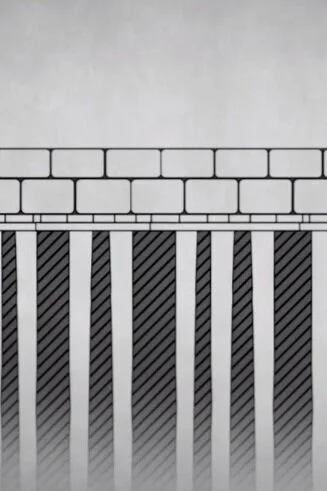The first lagoon dwellers
built their mud and wattle huts on stilts like this present-day fishing hut. Mainland forests of oak, larch, fir, and elm provided the pilings which were driven into the mud floor beneath the shallow waters of the lagoon.
When the mainland Romans fled Attila’s invasion, they found shifting sand bars, marshes, and mud flats upon which it was impossible to build the structures of brick and stone to which they were accustomed. But the lagoon dwellers also discovered that the trees which they used for pilings, cut off from the air by their sheaths of salty mud, did not decay. They turned to stone. By driving tree trunks into the mud, tightly spaced, and placing layers of wood and stone on top of them, they created a stable foundation for their buildings.
Over time they mastered
these techniques and built many of the most important and beautiful structures in the world. An estimated million plus trees were driven into the ground to create the substrate upon which the massive Istrian marble church of Santa Maria della Salute (1630) stands.





